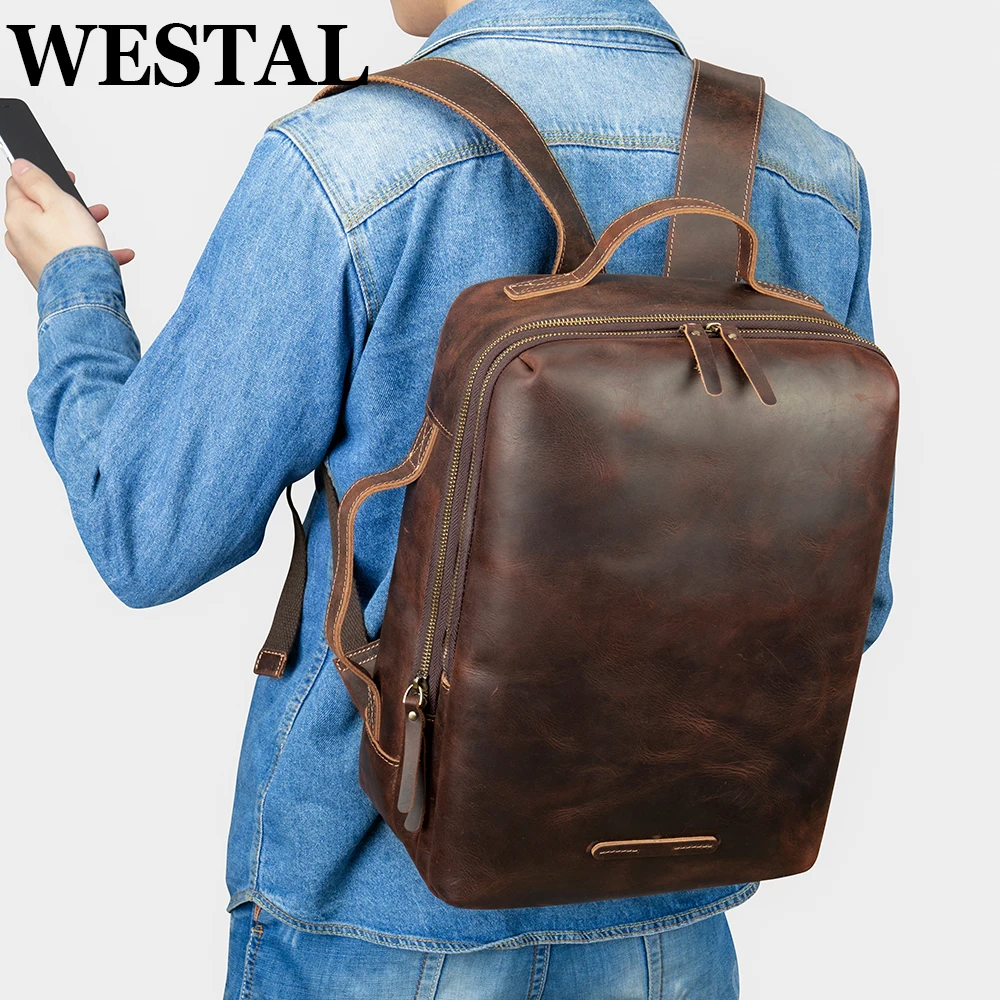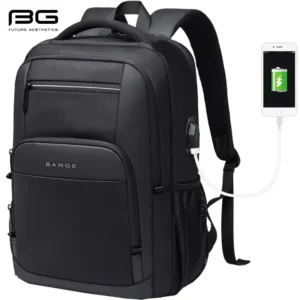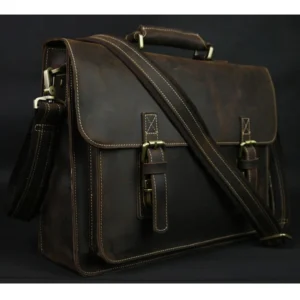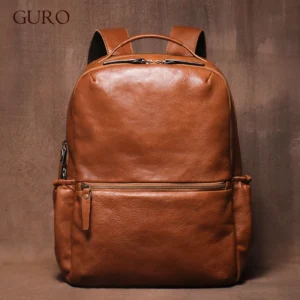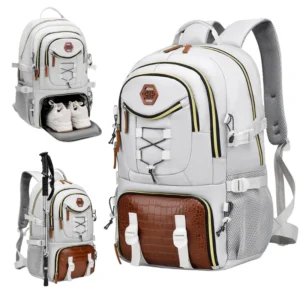Introduction: Elevate Your Campus Style and Functionality with a Leather Backpack
When it comes to campus essentials, few items combine practicality and style as seamlessly as a quality leather backpack. Beyond just carrying your books and laptop, these timeless accessories make a statement while serving as reliable companions throughout your academic journey.
Leather backpacks stand apart from typical campus bags thanks to their exceptional durability. Unlike synthetic alternatives that often wear out after a few semesters, a well-crafted leather backpack can accompany you from freshman orientation through graduation and beyond. The material actually improves with age, developing a rich character that tells the story of your college experience.
What makes leather particularly suitable for campus life is its versatility. The same backpack that carries your textbooks to morning lectures can transition effortlessly to internship meetings or evening social gatherings. Many students find that fashionable leather backpacks students offer both the functionality they need for daily classes and the professional appearance suitable for career events.
In this comprehensive guide, we’ll explore everything you need to know about selecting the perfect leather backpack for campus life—from understanding leather quality and finding the right size to smart organization features and style considerations. We’ll also share expert recommendations and essential care tips to help you make an investment that will serve you well throughout your academic career and professional life.
Why Leather? The Unbeatable Choice for University Life
Exceptional Durability Meets Timeless Style
The primary reason leather stands out for campus use is its remarkable longevity. While most backpacks made from synthetic materials might last a year or two before showing significant wear, a quality leather backpack can easily withstand four years of heavy campus use and continue serving you well into your professional life. This exceptional durability makes leather an investment rather than an expense.
What truly sets leather apart is how it ages. Unlike synthetic materials that simply break down over time, leather develops what enthusiasts call a “patina”—a rich character that emerges with use. Scuffs, marks, and color variations that would make other materials look worn instead give leather unique personality and depth. Your backpack literally becomes more attractive the more you use it.
Campus-Ready Resilience
University life puts bags through considerable stress. From heavy textbooks and laptops to unexpected rain showers and coffee spills, your backpack faces numerous challenges. Quality leather provides natural resistance to many common campus hazards. With proper care, it stands up to moisture, abrasion, and daily handling better than most alternatives.
Durable leather bags daily classes have proven themselves as reliable companions through everything from packed lecture halls to library study sessions. The natural strength of leather fibers means less worry about tears at stress points, even when carrying heavy course loads.
Sustainability Through Longevity
In an age of increasing environmental awareness, leather offers a surprisingly sustainable choice through its longevity. While the initial production impact exists, the extended lifespan of a quality leather product—often 5-10 years with proper care—means you’ll replace it far less frequently than synthetic alternatives. This “buy once, use for years” approach reduces overall consumption and waste.
For environmentally conscious students, options now include ethically sourced leather from tanneries using vegetable-based processes rather than harmful chemicals. These sustainable practices create beautiful products that align with values of responsible consumption.
Essential Features to Look For in a Student’s Leather Backpack
When evaluating leather backpacks for campus use, several key features determine whether a bag will meet your daily needs. Beyond just appearance, you’ll want to consider how the backpack functions during typical student activities—from rushing between classes to studying for hours at the library.
The ideal campus leather backpack strikes a perfect balance between aesthetic appeal and practical functionality. As we explore specific features in detail, keep your personal priorities in mind, whether that’s maximum organization, superior comfort, or standout style.
Understanding Leather Quality: What Sets Premium Options Apart
Not all leather backpacks are created equal. The quality of leather used significantly impacts both appearance and durability—making it the most important feature to understand before making your choice.
Full-Grain Leather: This represents the highest quality available. Made from the top layer of the hide with all natural grain intact, full-grain leather backpacks offer exceptional durability and develop the most beautiful patina over time. You can identify full-grain leather by its natural imperfections and visible pores, which reveal its authenticity.
Top-Grain Leather: A solid middle-ground option, top-grain leather has had its outermost layer sanded down to remove imperfections. This creates a more uniform appearance but sacrifices some durability and character development compared to full-grain. It remains significantly more durable than lower-quality alternatives.
Genuine Leather: Despite its name suggesting authenticity, “genuine leather” typically indicates lower quality. Made from hide layers remaining after top layers are removed, these products lack the durability and character development of higher grades. They may look nice initially but tend to wear out faster.
Quality leather should feel substantial but not stiff, with a natural aroma rather than strong chemical smells. The edge finishing provides another quality indicator—look for edges that are burnished, painted, or finished rather than raw.
Hardware quality matters just as much as the leather itself. Premium backpacks feature solid metal hardware (brass, nickel, or stainless steel) rather than plastic components. YKK zippers or quality branded alternatives ensure smooth operation for years, while reinforced stitching at stress points prevents premature failure.
Finding the Perfect Size and Capacity for Your Academic Needs
Size selection directly impacts both functionality and comfort. Too small, and you’ll struggle to fit essential items; too large, and you’ll carry unnecessary weight or look disproportionate.
For most college students, a backpack between 18-25 liters provides sufficient capacity for daily essentials. Consider what you typically carry to determine where you fall within this range:
- Small (15-18L): Ideal for minimalist students carrying primarily digital materials, a tablet or small laptop, and few physical books.
- Medium (18-22L): The most versatile size for average course loads, accommodating a laptop, several books, notebooks, and personal items.
- Large (22-30L): Best for students with heavy course loads requiring multiple textbooks, specialized equipment, or those needing to pack for long days.
The laptop compartment deserves special attention—measure your device and add about an inch for proper fit. Most student laptops range from 13-17 inches, and leather school bags laptop compartments should provide both a snug fit and adequate padding.
Consider your physical build when choosing size as well. The backpack should appear proportional to your frame while remaining comfortable when fully loaded. For commuter students who travel longer distances, comfort features become especially important as bag weight increases.
Smart Organization: Compartments That Enhance Student Life
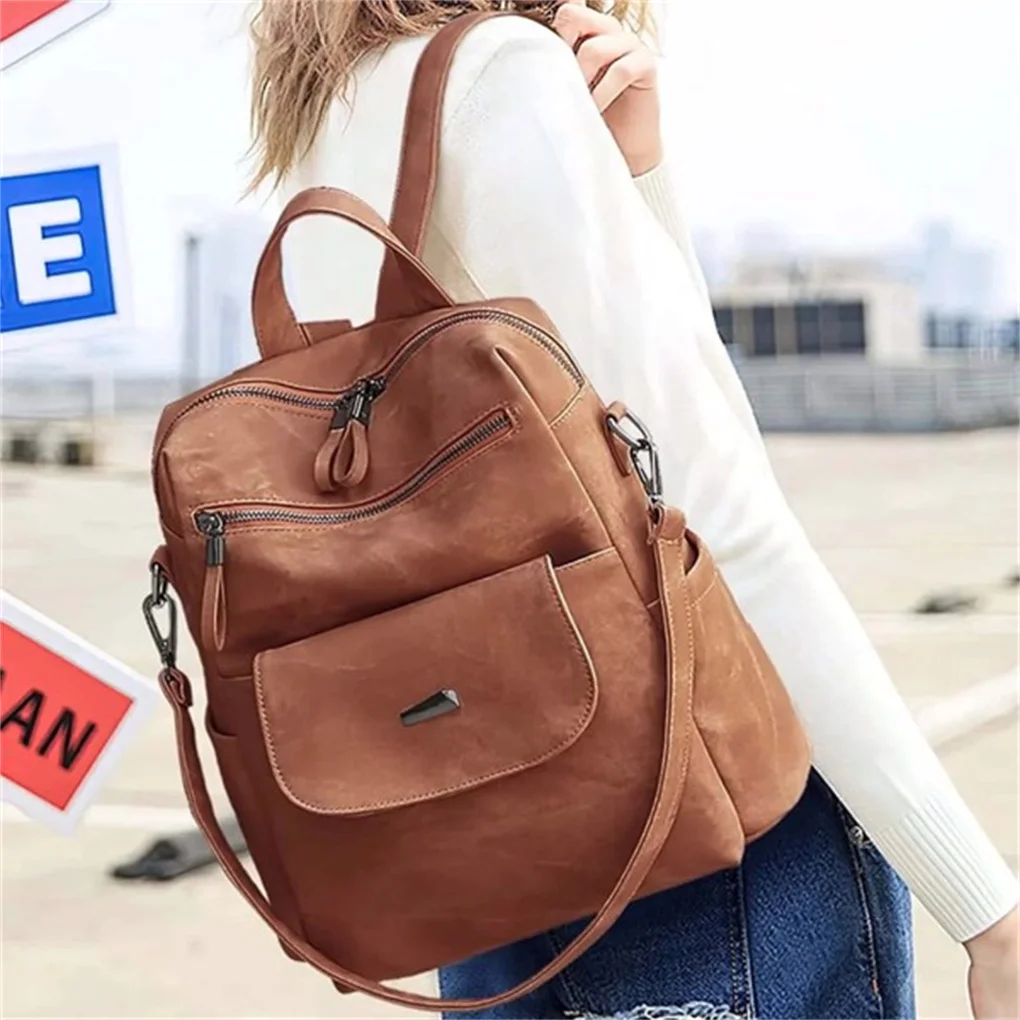
Effective organization transforms a simple bag into a productivity tool. The best student backpacks offer thoughtful compartmentalization that provides a place for everything.
Laptop Protection: Beyond just fitting your computer, look for dedicated laptop sleeves with padding on all sides, particularly the bottom. Suspended designs that keep your device from touching the bottom of the bag offer superior protection against accidental drops.
Main Compartment Design: The primary storage space should open wide for easy access to larger items like textbooks and binders. Look for reinforced stitching at the bottom to support heavier loads without sagging or tearing. Organizing textbooks leather backpacks efficiently helps distribute weight evenly and prevents damage to your materials.
Internal Organization: Smaller pockets and dividers keep accessories organized and accessible. Look for:
* Pen slots and smaller stationery compartments
* Mesh or transparent pockets for visibility
* Cable management features
* Secure pockets for valuables like wallets or keys
External Access: Quick-access pockets on the exterior prove invaluable for items you need frequently throughout the day:
* Water bottle holders (ideally expandable)
* Phone pockets at the shoulder strap or top
* ID or transit card slots
* Hidden security pockets against your back for valuables
Closure mechanisms affect both security and accessibility. Zippers offer quick, secure access but may eventually wear out. Buckles and magnetic snaps provide classic style and often greater longevity, though accessing contents takes slightly longer. The best designs combine these approaches with zippers for main access and alternative closures for aesthetic elements.
Prioritizing Comfort: Ergonomic Design for Daily Campus Commutes
Even the most beautiful leather backpack becomes useless if it’s uncomfortable to carry. Ergonomic design features become increasingly important as load weight increases or carrying time extends.
Shoulder Straps: Look for padded straps at least 2 inches wide that distribute weight across your shoulders rather than cutting in. Adjustability ensures proper positioning regardless of your height or the bag’s contents. S-curved straps that follow your body’s natural contours provide superior comfort compared to straight designs.
Back Panel Design: The part of the backpack that rests against your body significantly impacts comfort. Padded back panels with airflow channels help prevent excessive sweating, while contoured designs follow your spine’s natural curve. Leather laptop backpacks often include additional padding to protect both you and your devices.
Alternative Carrying Options: A reinforced top handle allows easy grabbing from desks or overhead compartments. Some designs also include side handles or convertible strap systems for briefcase-style carrying when appropriate.
Weight Distribution: Well-designed backpacks distribute weight vertically rather than pulling away from your back. Look for compression straps that pull the load closer to your center of gravity and stabilizing chest straps for particularly heavy loads.
For students regularly carrying heavier materials, additional support features like load-lifter straps at the top of the shoulder straps help adjust the backpack’s position for optimal weight distribution.
Top Leather Backpacks for Campus Life: Expert Recommendations
After evaluating dozens of leather backpacks against our comprehensive criteria, we’ve selected standout options for various student needs. Our recommendations consider quality, functionality, comfort, style, and value—focusing on backpacks that excel in multiple categories while offering particular strengths for specific users.
Each recommendation has been assessed for its performance in real student scenarios, from rushing between classes to studying in various campus locations and transitioning to professional settings.
Best Overall Leather Backpack for Students
The ideal all-around leather backpack for students combines versatility, quality materials, thoughtful organization, and reasonable pricing. Our top overall pick excels in every essential category without significant weaknesses.
Key Features:
* Full-grain leather construction with reinforced stitching at stress points
* Padded compartment fitting laptops up to 15.6 inches
* Multiple interior organization pockets for accessories and small items
* Expandable water bottle pockets on both sides
* Padded shoulder straps with breathable mesh lining
* Quick-access front pocket with internal organizer
* Reinforced top handle for alternative carrying
Perfect For: Students seeking a balanced option that transitions seamlessly between casual classes, study sessions, internship meetings, and social gatherings. The classic design ensures it remains stylish throughout your academic career and beyond.
Considerations: The premium materials make this a higher initial investment, though the cost-per-use over several years makes it economical in the long run. At approximately 3 pounds when empty, it’s slightly heavier than synthetic alternatives.
The Minimalist’s Choice: Sleek Design Without Sacrificing Function
For students preferring streamlined aesthetics without unnecessary bulk, minimalist leather backpacks offer elegant simplicity while retaining essential functionality.
Key Features:
* Clean, architectural design with minimal external embellishments
* Top-grain leather with smooth, uniform finish
* Single main compartment with padded laptop sleeve
* Limited but thoughtful internal organization
* Slim profile that maintains professional appearance even when full
* Hidden external pocket for quick-access items
* Sleek hardware with concealed zipper design
Perfect For: Design-conscious students who carry primarily digital materials and prefer a sophisticated urban aesthetic. Ideal for creative fields where personal style makes a statement.
Considerations: The streamlined design limits total capacity and organization options. Best for those who have embraced digital note-taking and reading rather than carrying multiple textbooks.
Best for Heavy Course Loads: Maximum Capacity and Support
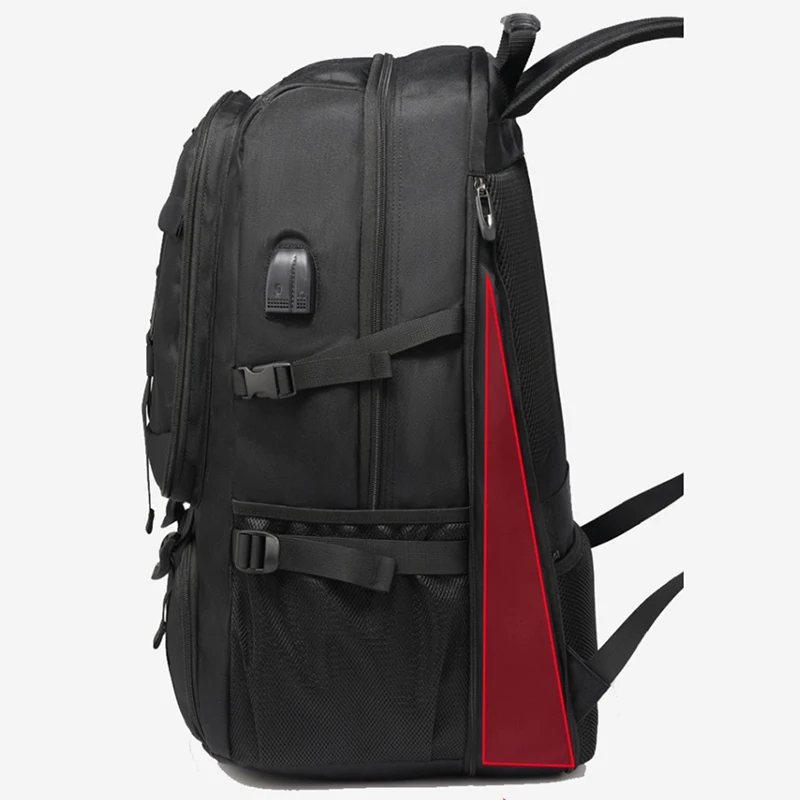
Some academic programs demand substantial materials—from thick textbooks to specialty equipment. For these needs, a high-capacity backpack with superior support features becomes essential.
Key Features:
* Expanded 28-30L capacity with reinforced bottom panel
* Full-grain leather construction with double-stitched seams
* Enhanced ergonomic features including contoured shoulder straps and sternum strap
* Padded back panel with ventilation channels
* Multiple compartments including expandable main section
* Dedicated, suspended laptop compartment for devices up to 17 inches
* Compression straps to stabilize loads of varying sizes
Perfect For: Students in text-heavy programs like law, medicine, architecture, or engineering who regularly transport multiple large books and specialized equipment. Large leather backpacks offer the space needed for comprehensive course materials without sacrificing durability.
Considerations: The larger size makes this backpack less suitable for crowded environments. At around 3.5 pounds empty, the additional weight should be considered alongside your typical load.
The Style Icon: Premium Design for Fashion-Conscious Students
When personal style ranks equally with functionality, certain leather backpacks stand out for their exceptional design details and premium materials while maintaining practical campus utility.
Key Features:
* Distinguished design with unique signature elements
* Premium full-grain leather with visible natural grain pattern
* Distinctive hardware in brass or brushed metal
* Thoughtfully designed silhouette that makes a statement
* Interior organization that complements the exterior aesthetics
* Laptop protection integrated seamlessly into the design
* Elegant details like hand-burnished edges and precision stitching
Perfect For: Students for whom personal style is a priority, especially those in design, fashion, business, or arts programs where presentation matters. Style leather backpack school environments allows personal expression while maintaining functionality.
Considerations: Style-forward options often command premium prices. Evaluate whether the distinctive design elements provide value that matches the investment for your specific needs.
Best Value Investment: Quality and Durability at a Reasonable Price
Value doesn’t mean simply choosing the cheapest option—it means finding the optimal balance between quality and price. Our value pick offers exceptional durability and functionality at a more accessible price point.
Key Features:
* Top-grain leather that offers good durability with lower cost than full-grain
* Reinforced construction at critical wear points
* Standard organizational features including laptop compartment (up to 15 inches)
* Comfortable padded straps with adequate adjustment range
* Classic design that resists looking dated
* Quality YKK zippers and metal hardware
* Water-resistant treatment for practical protection
Perfect For: Budget-conscious students who still want the benefits of leather quality and durability. This option provides most essential features of premium backpacks while remaining more affordable. Leather backpacks daily use scenarios don’t always require the absolute premium option to get excellent performance.
Considerations: Some refinement details like edge finishing or hardware quality may be simplified compared to more expensive options. However, these differences affect aesthetics more than fundamental durability.
Comparison of Top Student Leather Backpacks
| Backpack Type | Price Range | Capacity | Max Laptop Size | Weight | Standout Feature | Best For |
|---|---|---|---|---|---|---|
| Best Overall | $$$$ | 22L | 15.6” | 3.0 lbs | Perfect balance of features | Most students |
| Minimalist | $$$ | 18L | 15” | 2.5 lbs | Sleek, simplified design | Digital-focused students |
| Heavy Load | $$$$$ | 30L | 17” | 3.5 lbs | Maximum capacity & support | Text-heavy programs |
| Style Icon | $$$$$ | 20L | 15” | 3.2 lbs | Premium design details | Fashion-conscious students |
| Best Value | $$ | 24L | 15” | 3.1 lbs | Quality at lower price point | Budget-conscious students |
14 Inch Leather Laptop Backpack, Brown Leather Backpack, Men's Leather Backpack, Vintage Leather Backpack
Price range: $177.28 through $199.12 Select options This product has multiple variants. The options may be chosen on the product pageDesigner Men's Backpack, Men's Leather Laptop Backpack, Men's Leather Work Backpack
Price range: $158.04 through $160.04 Select options This product has multiple variants. The options may be chosen on the product page15 Inch Leather Laptop Backpack, Leather Briefcase Backpack
$332.96 Select options This product has multiple variants. The options may be chosen on the product page17 Inch Leather Laptop Backpack, Men's Leather Travel Backpack, Men's Leather Work Backpack
Price range: $106.28 through $143.88 Select options This product has multiple variants. The options may be chosen on the product pageFull Grain Leather Backpack, Men's Leather Laptop Backpack, Men's Leather Work Backpack
$353.46 Select options This product has multiple variants. The options may be chosen on the product page15 Inch Leather Laptop Backpack, Carry On Leather Backpack
Price range: $136.84 through $139.88 Select options This product has multiple variants. The options may be chosen on the product page
Styling Your Leather Backpack: From Classroom to Campus Events
A quality leather backpack serves as a versatile accessory that complements various campus wardrobes and situations. Learning to style your backpack appropriately enhances both its functionality and your personal presentation.
For everyday classes, leather backpacks pair naturally with casual attire like jeans, chinos, t-shirts, and sweaters. The natural texture of leather adds a touch of sophistication to even the most relaxed outfits. During warmer months, leather backpacks create an interesting contrast with lighter fabrics and colors.
When transitioning to more formal settings like presentations, interviews, or networking events, your leather backpack can adapt accordingly. Paired with business casual attire, a well-designed leather backpack looks professional and organized. Stylish leather backpacks college environments demand versatility, and leather delivers this adaptability beautifully.
Personalization adds character to your backpack while making it distinctly yours. Consider:
* Leather tags or monogramming for subtle identification
* Carefully selected keychains or accessories on external attachment points
* Custom patina development through regular use and proper care
The beauty of quality leather lies in its chameleon-like ability to match your changing needs throughout your academic career and beyond. As you transition from student to professional, your backpack evolves alongside you—often looking even better with age.
Essential Leather Backpack Care: Protecting Your Investment
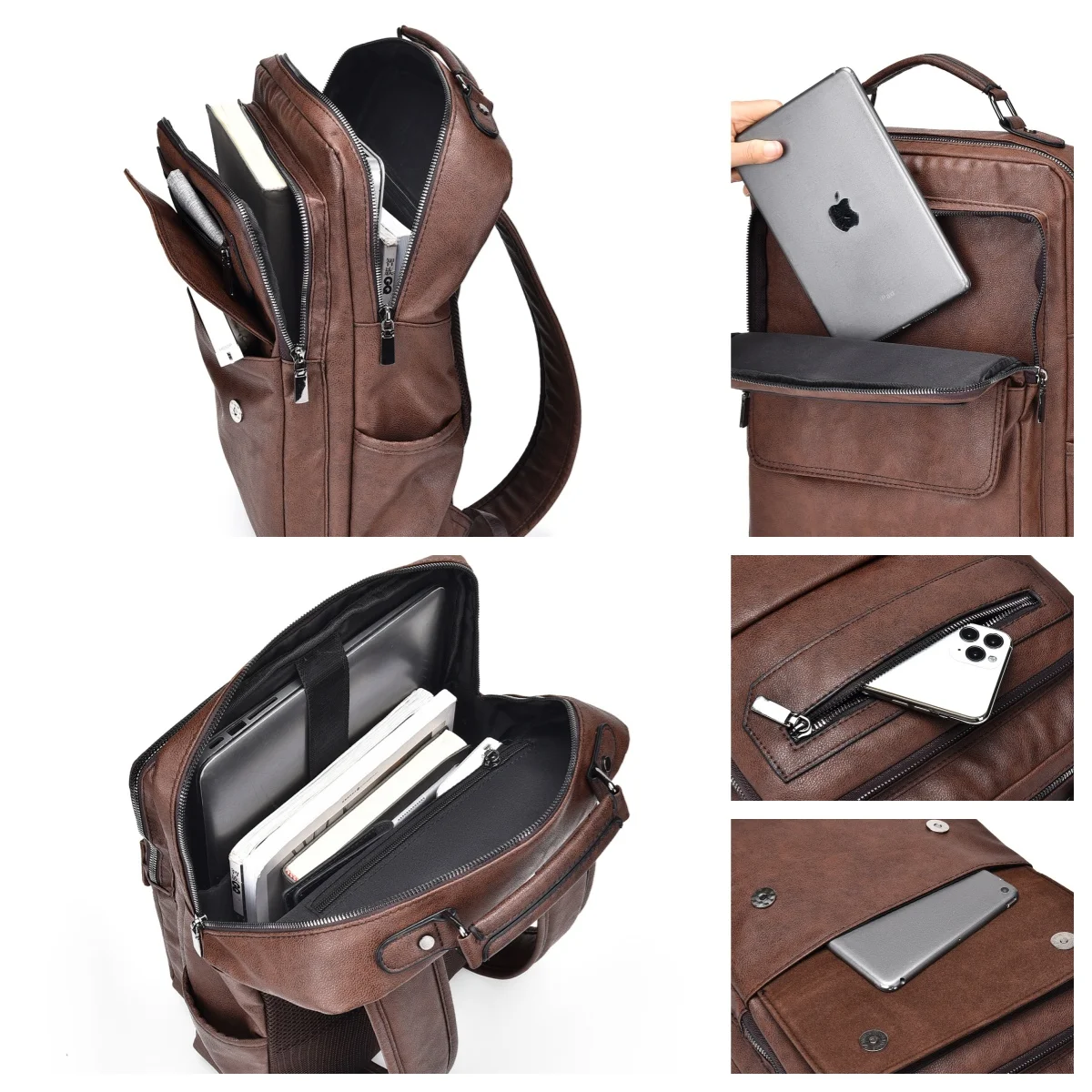
Proper maintenance ensures your leather backpack remains beautiful and functional throughout your academic career. Fortunately, basic leather care requires minimal time while delivering significant benefits.
Regular Maintenance Routine
Weekly Care:
* Wipe down your backpack with a soft, dry cloth to remove dust and surface dirt
* Empty all pockets and compartments to prevent debris buildup
* Check and clean hardware (zippers, buckles) with a small brush
Monthly Care:
* Clean with appropriate leather cleaner for your specific leather type
* Apply leather conditioner to prevent drying and cracking
* Pay special attention to high-wear areas like handles and bottom corners
Cleaning Techniques
For routine cleaning:
1. Remove surface dirt with a soft brush or cloth
2. Apply a small amount of leather-specific cleaner to a damp cloth
3. Gently wipe in circular motions, focusing on soiled areas
4. Allow to air dry naturally away from direct heat sources
For spills and stains:
1. Blot (don’t rub) liquid spills immediately with an absorbent cloth
2. For persistent stains, use a cleaner specifically formulated for leather
3. Test any product on an inconspicuous area first
4. Follow with conditioner after cleaning
Protection Strategies
- Apply leather protectant spray seasonally, especially before rainy periods
- Use water-repellent treatments appropriate for your specific leather type
- Avoid prolonged exposure to direct sunlight, which can cause fading
- Keep away from extreme heat sources that can dry and crack leather
Proper Storage
During breaks or when not in use:
* Clean and condition thoroughly before storing
* Stuff with acid-free paper to maintain shape
* Store in a breathable cloth bag, never plastic
* Keep in a cool, dry location away from direct sunlight
* Check periodically for signs of mold or dryness
With proper care, your leather backpack will develop a beautiful patina over time—making it uniquely yours while maintaining its functionality and structural integrity throughout your academic journey and beyond.
Frequently Asked Questions About Leather Backpacks for Students
Are leather backpacks too heavy for carrying textbooks on campus?
While leather backpacks are slightly heavier than some synthetic alternatives, the difference is typically only 0.5-1 pound when empty. A well-designed leather backpack distributes weight effectively through padded straps and ergonomic features, often making the carrying experience more comfortable despite the marginal weight increase. The structural integrity of leather also prevents sagging under heavy loads, which can make lower-quality lightweight bags uncomfortable when filled with textbooks.
What is the expected lifespan of a quality leather backpack?
With proper care, a quality full-grain or top-grain leather backpack can easily last 5-10 years of regular use. Many leather backpacks continue functioning well beyond this timeframe, often becoming family heirlooms. This extended lifespan makes leather backpacks economical when considered on a cost-per-use basis compared to synthetic bags that typically require replacement every 1-2 years under similar use conditions.
Can I use my leather backpack in the rain?
Most quality leather backpacks can handle light rain exposure, especially when treated with appropriate leather protectant. However, prolonged exposure to heavy rain should be avoided when possible. If your backpack does get wet, allow it to dry naturally at room temperature away from direct heat sources, then condition once completely dry to restore moisture. Many premium leather backpacks now include water-resistant treatments that provide additional protection.
How do I effectively clean spills or stains from my leather backpack?
For fresh spills, immediately blot (don’t rub) with a clean, absorbent cloth. For set stains, use leather cleaner appropriate for your specific leather type, applying with a soft cloth in gentle circular motions. Always test cleaning products on an inconspicuous area first, and follow cleaning with leather conditioner to prevent drying. Avoid household cleaners, which can damage leather finishes and accelerate deterioration.
Is PU leather a viable alternative for students on a budget?
Polyurethane (PU) leather offers a significantly lower price point and can serve students on strict budgets. However, its lifespan is considerably shorter than genuine leather, typically showing wear within 1-2 years of regular use. PU leather doesn’t develop a patina or improve with age—instead, it tends to crack and peel over time. For students able to make a slightly larger initial investment, genuine leather provides better long-term value through its extended lifespan.
Is a leather backpack truly a worthwhile investment for college students?
For most students, a quality leather backpack represents an excellent long-term investment. While the upfront cost exceeds synthetic alternatives, the extended lifespan means lower annual cost over your academic career. Additionally, leather backpacks retain their functionality and appearance for post-graduation professional use. The versatility to transition between casual campus settings and more formal environments provides additional value that purely utilitarian backpacks cannot match.
Ready to Find Your Ideal Campus Leather Backpack?
The perfect leather backpack for your campus journey combines quality materials, appropriate size, thoughtful organization, comfortable design, and personal style preferences. By focusing on full-grain or top-grain leather, proper construction techniques, and features that align with your specific needs, you’ll find a backpack that serves you well throughout your academic career and beyond.
Remember that quality leather improves with age, developing character that tells the story of your educational journey. This unique quality makes leather backpacks not just functional tools but meaningful companions throughout your campus life. Summit Carry offers premium leather backpacks designed specifically with student needs in mind—combining timeless style with modern functionality for today’s campus demands.
Whether you prioritize maximum organization, style-forward design, or ultimate durability, the right leather backpack awaits to elevate both your campus experience and personal style.
